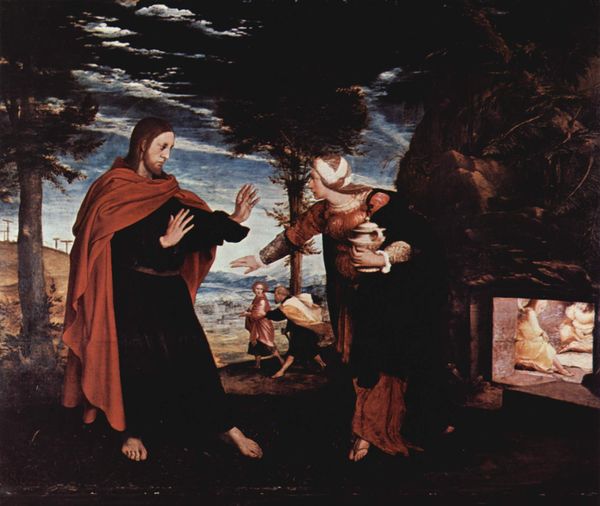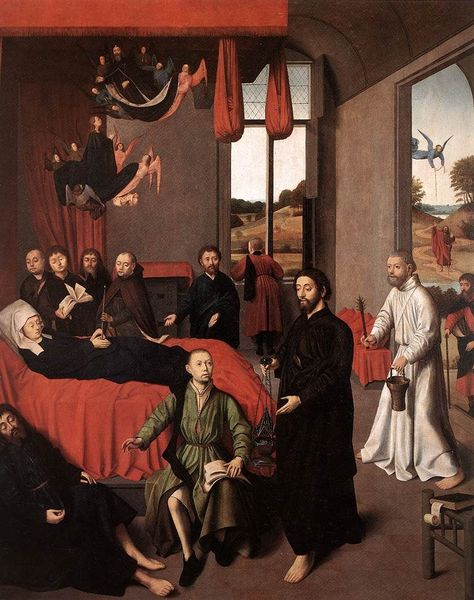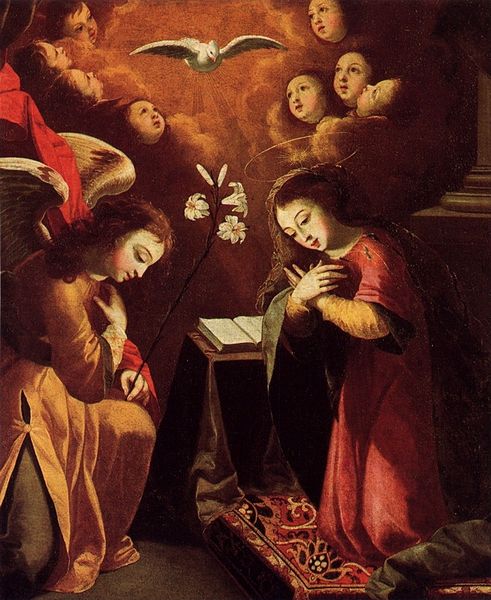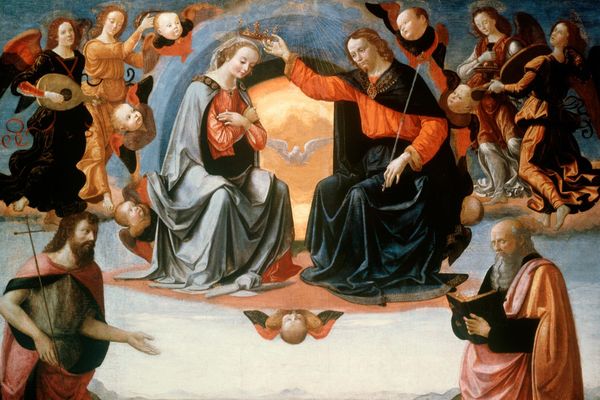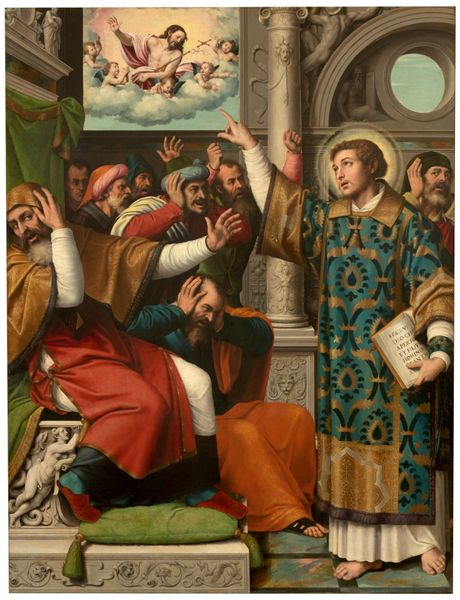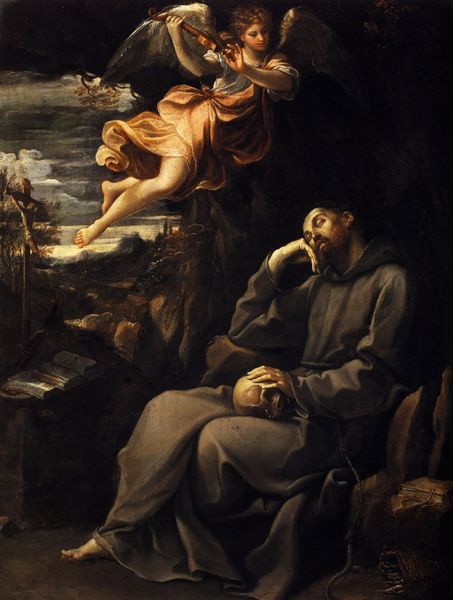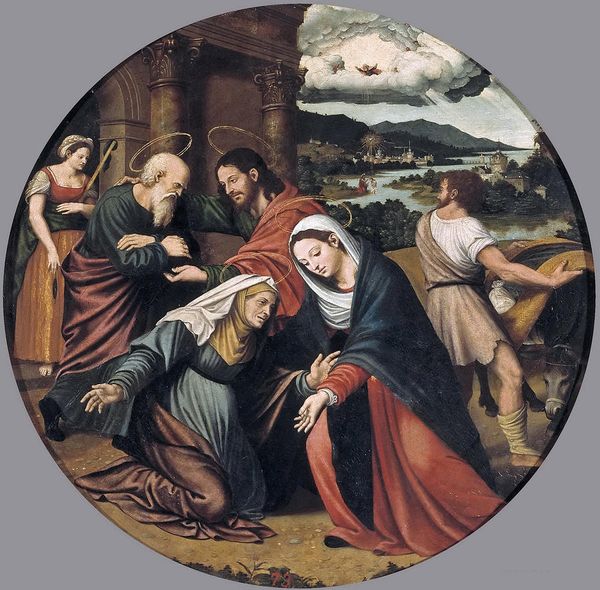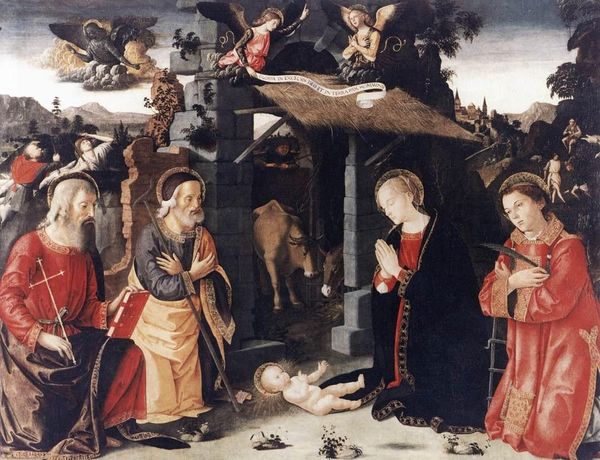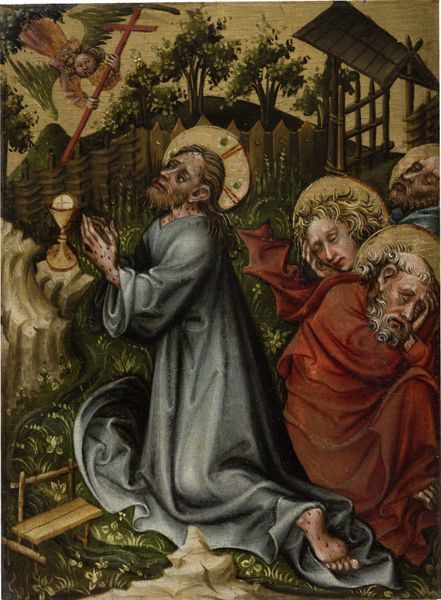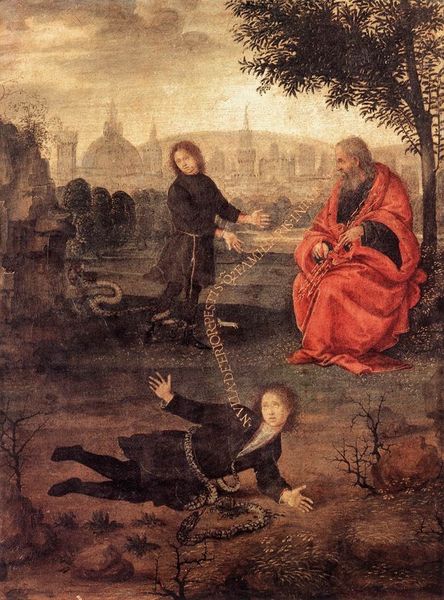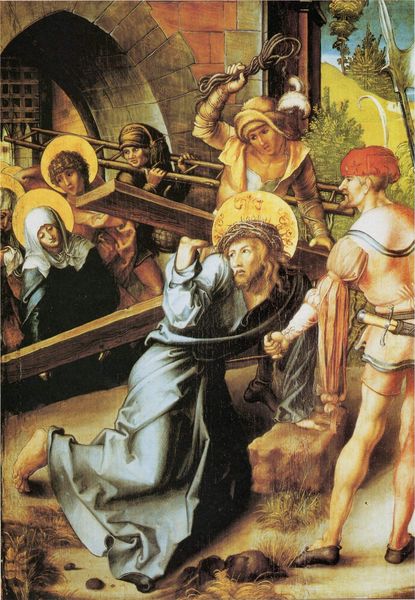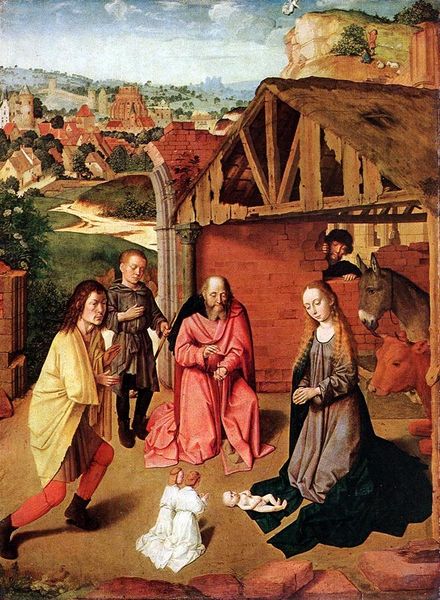
painting, oil-paint
#
painting
#
oil-paint
#
figuration
#
history-painting
#
italian-renaissance
Copyright: Public domain
Plautilla Nelli, a self-taught, 16th-century Florentine nun, painted "Saint Dominic Receives the Rosary", and we can understand it as an explicit assertion of female artistic capabilities within a highly patriarchal society. Nelli and her fellow nuns resided in a convent operating under strict religious rules. The convent's economic activities allowed Nelli to pursue artistic endeavors. This image creates meaning through its religious subject matter. It reflects the religious fervor of the time, when the Catholic Church sought to reinforce its authority through art. The painting's focus on Saint Dominic and the rosary promotes the importance of prayer and devotion. The social structures of the time were rigidly hierarchical, with women largely excluded from positions of power. Yet, Nelli managed to subvert these constraints by establishing herself as a successful artist. Further research into convent records, religious texts, and social histories can offer deeper insights into the painting's meaning. Art isn't just about aesthetics; it reflects the complex interplay of social, cultural, and institutional forces that shape artistic production.
Comments
No comments
Be the first to comment and join the conversation on the ultimate creative platform.
